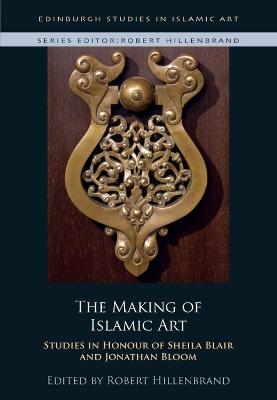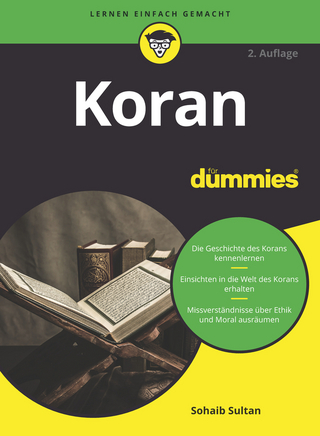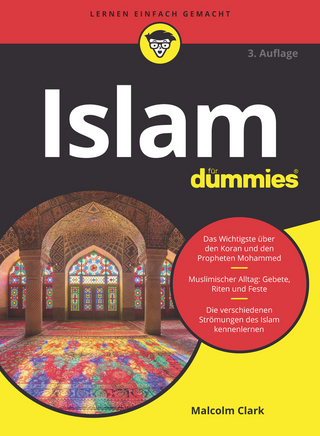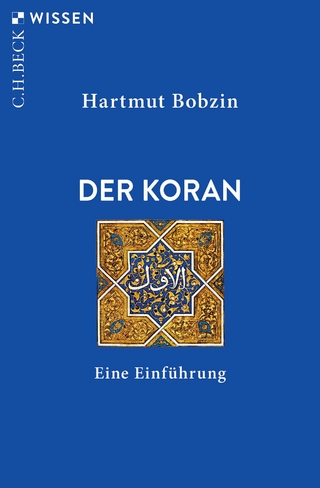
The Making of Islamic Art
Studies in Honour of Sheila Blair and Jonathan Bloom
Seiten
2021
Edinburgh University Press (Verlag)
978-1-4744-3429-4 (ISBN)
Edinburgh University Press (Verlag)
978-1-4744-3429-4 (ISBN)
Explores how Islamic art and architecture were made: their materials and their social, political, economic and religious context
In their own words, Jonathan Bloom and Sheila Blair espouse 'things and thinginess rather than theories and isations'. This book's practical, down-to-earth dimension, expressed in plain, simple English, runs counter to the current fashion for theoretical explanations and their accompanying jargon when exploring the world of Islamic art. Its many insights, firmly anchored in artistic practice in architecture, painting and the decorative arts, are supported by ample technical know-how. The range is wide mosques becoming temples; how religious buildings reflect politics; Yemeni frescoes and inscriptions; domestic Syrian 18th-century ornament; Egyptian bookbinding techniques; recycling and repair in Damascene crafts; conservation versus restoration; narrative on ceramics; metalwork with architectural motifs; lost buildings reconstructed; how objects speak;Muslim burials in China; the role of migrating potters; Mughal painting; stone carpet weights; the use of metals in Islamic manuscripts, calligraphy and modern artists' books.
In their own words, Jonathan Bloom and Sheila Blair espouse 'things and thinginess rather than theories and isations'. This book's practical, down-to-earth dimension, expressed in plain, simple English, runs counter to the current fashion for theoretical explanations and their accompanying jargon when exploring the world of Islamic art. Its many insights, firmly anchored in artistic practice in architecture, painting and the decorative arts, are supported by ample technical know-how. The range is wide mosques becoming temples; how religious buildings reflect politics; Yemeni frescoes and inscriptions; domestic Syrian 18th-century ornament; Egyptian bookbinding techniques; recycling and repair in Damascene crafts; conservation versus restoration; narrative on ceramics; metalwork with architectural motifs; lost buildings reconstructed; how objects speak;Muslim burials in China; the role of migrating potters; Mughal painting; stone carpet weights; the use of metals in Islamic manuscripts, calligraphy and modern artists' books.
Professor Robert Hillenbrand is Professor Emeritus of Islamic Art the University of Edinburgh and Professor of Islamic Art at the University of St Andrews.
| Erscheinungsdatum | 01.11.2019 |
|---|---|
| Reihe/Serie | Edinburgh Studies in Islamic Art |
| Zusatzinfo | 28 B/W illustrations 135 colour illustrations |
| Verlagsort | Edinburgh |
| Sprache | englisch |
| Maße | 172 x 244 mm |
| Themenwelt | Kunst / Musik / Theater ► Kunstgeschichte / Kunststile |
| Kunst / Musik / Theater ► Malerei / Plastik | |
| Geisteswissenschaften ► Religion / Theologie ► Islam | |
| Technik ► Architektur | |
| ISBN-10 | 1-4744-3429-0 / 1474434290 |
| ISBN-13 | 978-1-4744-3429-4 / 9781474434294 |
| Zustand | Neuware |
| Informationen gemäß Produktsicherheitsverordnung (GPSR) | |
| Haben Sie eine Frage zum Produkt? |
Mehr entdecken
aus dem Bereich
aus dem Bereich


